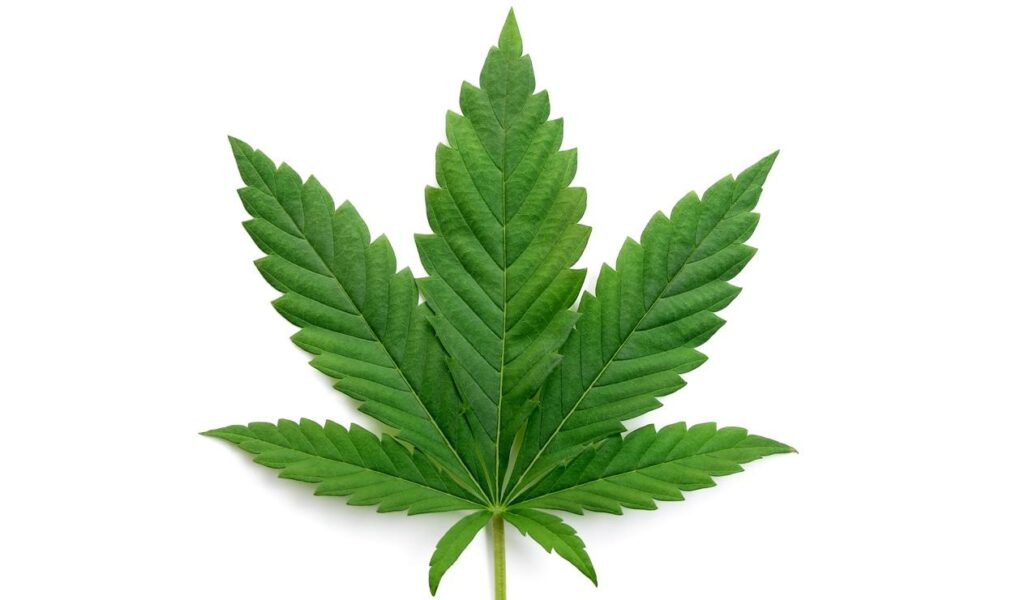Welcome to the green revolution—where cannabis is no longer just a whisper among enthusiasts but a subject of vigorous debate, scientific inquiry, and cultural significance. As society’s perception of marijuana continues to evolve, it becomes crucial to sift through the haze of myths and misconceptions. From its ancient medicinal roots to its contemporary applications in wellness, recreation, and industry, marijuana encompasses a complex tapestry of information. In this article, we aim to illuminate the multifaceted world of cannabis, offering insights into its benefits, risks, legal landscape, and the latest research findings. Whether you’re a curious novice or a seasoned connoisseur, join us as we explore the rich and often misunderstood realm of marijuana.
Table of Contents
- Exploring the Benefits and Risks of Marijuana Use
- Understanding Different Forms of Cannabis and Their Effects
- Navigating Legal and Regulatory Aspects of Marijuana
- Tips for Responsible Consumption and Best Practices
- Q&A
- In Conclusion
Exploring the Benefits and Risks of Marijuana Use
Marijuana use has garnered attention for its potential benefits, particularly within the medical realm. Users often cite relief from chronic pain, reduction in anxiety, and improvement in sleep quality as significant advantages. Some of the reported benefits include:
- Pain relief: THC and CBD can alleviate discomfort associated with conditions like arthritis and multiple sclerosis.
- Anxiety management: Some studies suggest that certain strains can help reduce feelings of stress and anxiety.
- Appetite stimulation: Particularly beneficial for individuals undergoing treatments like chemotherapy.
However, the consumption of marijuana also carries its share of risks and adverse effects. Users may experience impaired cognitive function, dependence, or increased anxiety in some cases. Noteworthy concerns linked to marijuana use include:
- Cognitive impairment: Short-term memory loss and decreased attention span can affect daily activities.
- Risk of dependency: Regular use may lead to psychological dependency, complicating cessation efforts.
- Lung health: Smoking marijuana can impact lung function, similar to tobacco use.
Understanding Different Forms of Cannabis and Their Effects
Cannabis comes in various forms, each with its unique characteristics and effects on the body and mind. The most common types include cannabis flowers, often referred to as buds, and concentrates, which are products derived from the cannabis plant through various extraction methods. The flowers are typically smoked or vaporized, offering immediate effects, while concentrates, such as oils and waxes, provide a more potent experience due to their higher levels of cannabinoids. Other popular forms include edibles, which are food products infused with cannabis, and tinctures, concentrated liquids that can be consumed sublingually for a quicker onset.
Each of these forms can produce different experiences based on their cannabinoid profiles, which include compounds like THC and CBD. The effects range widely, from euphoria and relaxation to anxiety and paranoia, depending on the strain and delivery method. To help you navigate through these variations, consider the following table that outlines common strains and their general effects:
| Strain Type | Primary Effects | Best For |
|---|---|---|
| Sativa | Uplifting, energizing | Creativity, daytime use |
| Indica | Relaxation, sedation | Evening use, sleep aid |
| Hybrid | Balanced effects | Versatile use, depending on strain |
Navigating Legal and Regulatory Aspects of Marijuana
Understanding the legal and regulatory landscape surrounding marijuana can be as complex as the plant itself. As various states and countries continue to enact legislation, it is crucial for consumers, cultivators, and businesses to stay informed about the current laws. Key considerations include:
- State vs. Federal Law: While some states have legalized marijuana, it remains illegal at the federal level in many jurisdictions.
- Licensing Requirements: Obtaining necessary licenses for cultivation, distribution, or sale can vary widely.
- Taxation: Regulatory frameworks often include special tax obligations that can impact profitability.
- Advertising Restrictions: Many regions impose strict guidelines on how marijuana products can be marketed.
To further assist those navigating this intricate web of regulations, understanding the terminology and compliance obligations is essential. Here’s a simple table summarizing some critical terms and their definitions:
| Term | Description |
|---|---|
| MMJ | Medical Marijuana, used under doctor’s supervision. |
| CBD | Cannabidiol, a non-intoxicating compound often used for therapeutic benefits. |
| THC | Tetrahydrocannabinol, the primary psychoactive component of marijuana. |
| Home Grow | Legal allowance for individuals to cultivate their own marijuana plants. |
Tips for Responsible Consumption and Best Practices
Engaging in responsible consumption of marijuana is essential for both personal well-being and societal harmony. Here are a few fundamental practices that can help ensure a safe and enjoyable experience:
- Know Your Strain: Research different strains and their effects to choose one that aligns with your needs and preferences.
- Start Low, Go Slow: Beginners should begin with low doses to gauge their tolerance and minimize adverse effects.
- Stay Hydrated: Keep water on hand to combat dry mouth and support overall hydration during your experience.
- Choose the Right Setting: Opt for a comfortable and familiar environment to enhance your experience and avoid unwanted distractions.
Furthermore, it’s vital to prioritize safety and legality in your consumption practices. Adhere to local laws and regulations regarding marijuana use, and consider the following best practices:
- Market Awareness: Purchase from reputable dispensaries that provide lab-tested products to ensure quality and safety.
- Never Drive Under the Influence: Avoid operating vehicles or machinery after consumption to ensure your safety and that of others.
- Storage Safety: Store marijuana products securely, away from children and pets, to avoid accidental ingestion.
- Engage in Open Conversations: Discuss your usage and experiences with friends and family to create a supportive community.
Q&A
Q&A: Understanding Marijuana – Unraveling the Green Mystery
Q1: What exactly is marijuana?
A1: Marijuana, also known as cannabis, is a plant that has been utilized for thousands of years for medicinal, recreational, and industrial purposes. It contains various compounds, the most notable being THC (tetrahydrocannabinol) and CBD (cannabidiol), which have different effects on the body and mind.
Q2: How does marijuana affect the body?
A2: When consumed, marijuana interacts with the endocannabinoid system in our bodies, which regulates various physiological processes. THC is responsible for the euphoric high often associated with marijuana use, while CBD is celebrated for its mellowing properties and potential health benefits without the psychoactive effects.
Q3: Are there different strains of marijuana?
A3: Yes, indeed! Marijuana is typically categorized into three main strains: Cannabis sativa, Cannabis indica, and Cannabis ruderalis. Sativa strains are known for their uplifting effects, ideal for social situations, whereas indica strains are often more calming and suited for relaxation or sleep. Ruderalis, though less common, is used primarily for its auto-flowering traits.
Q4: What are the potential health benefits and risks associated with marijuana?
A4: Many individuals find therapeutic relief in marijuana for conditions such as chronic pain, anxiety, inflammation, and certain neurological disorders. However, potential risks include impairments in cognitive function, addiction, and exacerbation of mental health issues in vulnerable populations. Consulting with healthcare professionals is recommended before use.
Q5: How is marijuana consumed?
A5: There are myriad ways to consume marijuana, including smoking (joints, pipes), vaping, edibles (infused food products), tinctures (alcohol-based extracts), and topical applications. Each method offers different onset times and durations of effects, catering to individual preferences and needs.
Q6: Is marijuana legal everywhere?
A6: Marijuana legality varies significantly around the world and even within countries. Some places have fully legalized it for recreational and medicinal use, while others strictly regulate or prohibit it altogether. Always check local laws and regulations before purchasing or using marijuana.
Q7: What should someone consider before trying marijuana for the first time?
A7: New users should consider their health conditions, the environment they’re in, and their motivations for trying marijuana. Start with a low dose, preferably with a strain rich in CBD to mitigate potential anxious feelings, and consume in a safe, comfortable setting. It’s a personal experience, and pacing yourself is key!
Q8: Can marijuana be addictive?
A8: While not everyone who uses marijuana becomes addicted, it is possible for some individuals to develop a dependency, particularly those who start using at a young age or use it frequently. Recognizing patterns of use and avoiding reliance on marijuana for emotional regulation can help mitigate these risks.
Q9: What is the future of marijuana research?
A9: With the increasing acceptance and legalization of marijuana globally, research is burgeoning, focusing on its medicinal properties, effects on mental health, and potential therapeutic applications. As legal barriers diminish, a clearer understanding of its benefits and limitations will likely unfold in the coming years.
Q10: Where can I find reliable information about marijuana?
A10: Reliable marijuana information can be found through reputable health organizations, academic studies, governmental health departments, and licensed dispensaries. It’s crucial to ensure that sources are current and based on scientific evidence to separate fact from fiction in this evolving landscape.
Curiosity about marijuana is natural in an ever-changing societal context. Whether for health, recreation, or research, informed decisions are always the best path forward.
In Conclusion
As we conclude our exploration of marijuana—from its historical roots and diverse strains to its potential benefits and ongoing research—it’s clear that this plant holds a multifaceted place in our world. The conversation surrounding marijuana is ever-evolving, influenced by shifting societal attitudes, legal landscapes, and scientific discoveries. Whether you view it through the lens of wellness, recreation, or regulation, staying informed is imperative as we navigate the complexities of this topic.
Remember, knowledge is power. As we continue to learn about marijuana’s potential and pitfalls, let us engage in discussions that prioritize education, empathy, and evidence-based insights. Whether you are a seasoned enthusiast, a curious newcomer, or simply someone looking to understand more, we hope this article has illuminated the many facets of marijuana information, encouraging you to seek out further knowledge and share it widely. The journey into understanding this ancient plant is just beginning, and there’s much more to discover. Thank you for joining us on this exploration.


